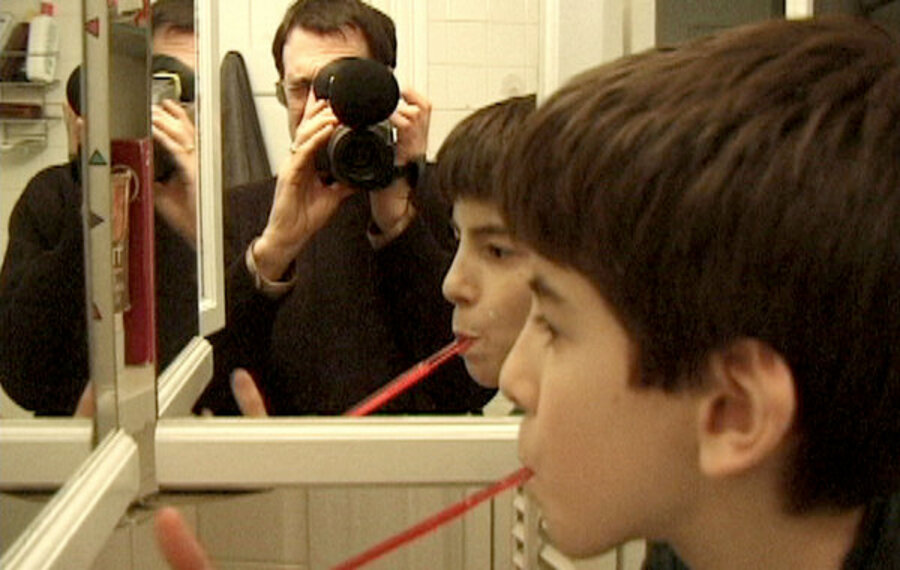'Photographic Memory': The permanence and impermanence of what we choose to preserve
Loading...
Since the 1980s, documentarian and Harvard film professor Ross McElwee has been composing wonderful personal memoirs that are both forward-looking and elegiac. In “Time Indefinite” (1993), he and his wife had a baby boy, Adrian, who popped up in a couple of subsequent films. “Photographic Memory,” McElwee’s marvelous new movie, is all about the grown-up Adrian, with whom his father is attempting to forge a better bond; but, equally, it’s about McElwee himself and his attempts to reconnect with the young man he was when he was Adrian’s age.
This means revisiting St. Quay-Portrieux in Brittany, France, where he was once a semi-vagabond in his 20s, and trying to recapture “what it was like to have most of my life ahead of me.”
McElwee’s voice-over narration, with its North Carolina lilt and its nuanced note of regret, is a species of confessional. He looks at photos of himself at age 24 and says to us about that time, “I could not possibly imagine myself as a father.” Now that he is one, he imagines that getting closer to the person he was then will allow him to more fully understand Adrian and their sometimes prickly, difficult relationship.
To some extent, Adrian’s surliness is typical young-guy rite-of-passage stuff. “These steps are so predictable,” McElwee says. But Adrian, who goes in for extreme skiing and tinkers with filmmaking and has a bunch of friends McElwee describes as “an impenetrable tribe,” is also, as his father says, “in a constant state of technological overload.” This is not something McElwee experienced at that age, and it makes him wonder how he would have handled the onslaught.
One of the ironies of “Photographic Memory” is that, as in almost all of his earlier films, Mc-Elwee is trying to seek out long-lost people who once meant something to him, while Adrian, in the Internet era, “never seems to lose touch with anyone.” In Brittany, McElwee tries to locate a photographer-employer named Maurice, a kind of Gallic hippie philosopher who chided his protégé for not knowing much about American jazz and was fond of playing Bach’s “Magnificat” on the xylophone. Even though Maurice ultimately fired McElwee for apparently losing some negatives, he still reveres him – his spirit.
Another quest is for a young woman, Maud Corbel, with whom he had a seaside fling. He claims that he owes her an apology because he left her, although he doesn’t remember why. McElwee has no intention of reviving an old flame, but, again, he wants to measure himself against his memories.
It’s a difficult and potentially dangerous expedition; when he finally locates Maud, he seriously considers turning back.
Their reunion, complete with a meal of sauteed frogs’ legs, is wistful, and McElwee, otherwise bracingly honest in his voice-over narrations, is rather politic in this section. But he doesn’t need to make explicit what we already can see for ourselves: Time has taken its toll. McElwee is an inveterate nostalgist. He was so even when he was making movies decades earlier (like his classic “Sherman’s March”).
Were he not such a complicated artist, his mooning about the past might come across as shtick. But he understands how movies can both clarify one’s memories and make them seem ineffably strange. When, prior to his return trip, he takes out some old photos of his Brittany sojourn, he is drawn to them, and yet seeing them is like “looking at photographs of a high school you didn’t attend.”
The 38 years since McElwee was last in Brittany have “just whisked by,” and he asks himself, without a trace of self-pity, “How did I get to be this old?” It’s less a lament than a simple statement of fact. He’s hornswoggled, and vastly intrigued, by the machinations of time. And because he is a filmmaker, he is, in a sense, dealing with time all the time. “Photographic Memory” is about the permanence and impermanence of what we choose to preserve: on film and in our heads (which is often the same thing). I would like to think that one day Adrian might look at this documentary and see it as a supreme act of paternal love. Grade: A (Unrated.)





